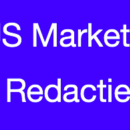een voor deze week en een voor de lange termijn. Op 14 Januari las ik: “We have seen trade activity fall off a cliff. Asia-Europe is an unmitigated disaster.”
Shipping journal Lloyd’s List said brokers in Singapore are now waiving fees for containers travelling from South China, charging only for the minimal “bunker” costs. Container fees from North Asia have dropped $200, taking them below operating cost.
Industry sources said they have never seen rates fall so low. “This is a whole new ball game,” said one trader.
The Baltic Dry Index (BDI) which measures freight rates for bulk commodities such as iron ore and grains crashed several months ago, falling 96pc. The BDI – though a useful early-warning index – is highly volatile and exaggerates apparent ups and downs in trade. However, the latest phase of the shipping crisis is different. It has spread to core trade of finished industrial goods, the lifeblood of the world economy.
Trade data from Asia’s export tigers has been disastrous over recent weeks, reflecting the collapse in US, UK and European markets.
A report by ING yesterday said shipping activity at US ports has suddenly dived. Outbound traffic from Long Beach and Los Angeles, America’s two top ports, has fallen by 18pc year-on-year, a far more serious decline than anything seen in recent recessions.
“This is no regular cycle slowdown, but a complete collapse in foreign demand,” said Lindsay Coburn, ING’s trade consultant.
The World Bank caused shockwaves with a warning last month that global trade may decline this year for the first time since the Second World War. This appears increasingly certain with each new batch of data.
Mr de Trenck predicts Asian trade to the US will fall 7pc this year. To Europe he estimates a drop of 9pc – possibly 12pc. Trade flows grow 8pc in an average year.
He said it was “illogical” for shippers to offer zero rates, but they do whatever they can to survive in a highly cyclical market.
In het licht van deze berichten las ik een doel voor de S&P van 250 want er is een continuatieppatroon wat hier naar verwijst. Eenzelfde uitkomst heb ik gezien en gelezen voor de AEX: doel 65 en DOW JONEs 2000. Die 2000 ben ik eerder tegengekomen in een voorspelling van 1600 als bodem ergens voor 2012 maar ook op deze site ben ik zo een uitkomst tegengekomen. Ik houd het op 4500 – 6500 gezien de grafieken van de DOW en niet al teveel leunend op het verleden want de samenstelling van de DOW erg lang geleden was anders. Het merkwaardige is dat ik wel bodems lees van pakweg 6000 in een lange termijnvoorspelling dat gebaseerd is op wislundige modellen en dit jaar kan plaatsvinden, het liefst voor mei 2009. Ik wacht af en morgen schrijf ik een call of koop een put of ik wacht de bodem af.

